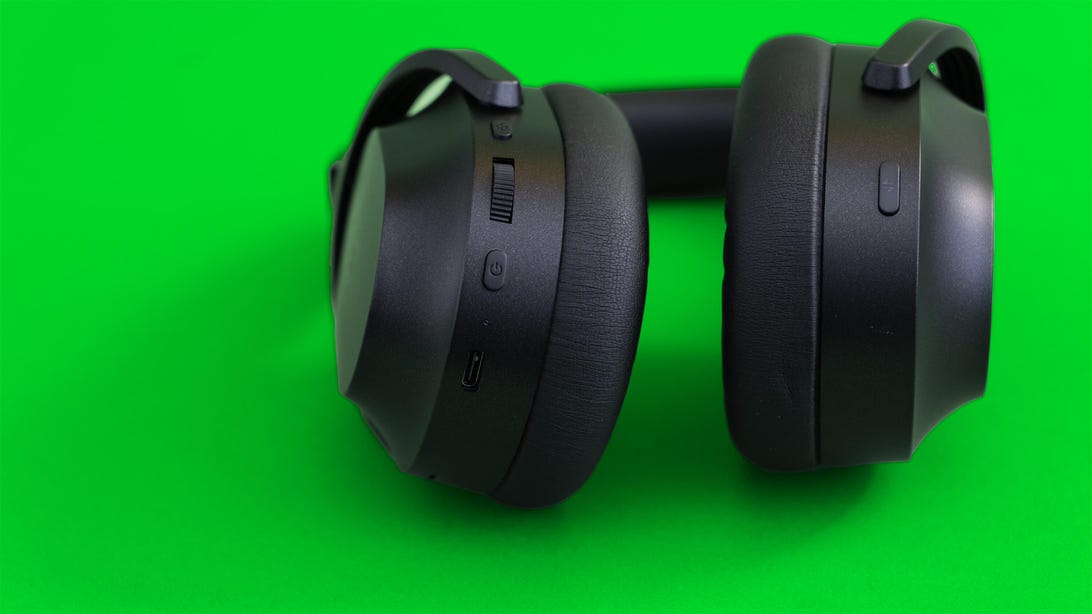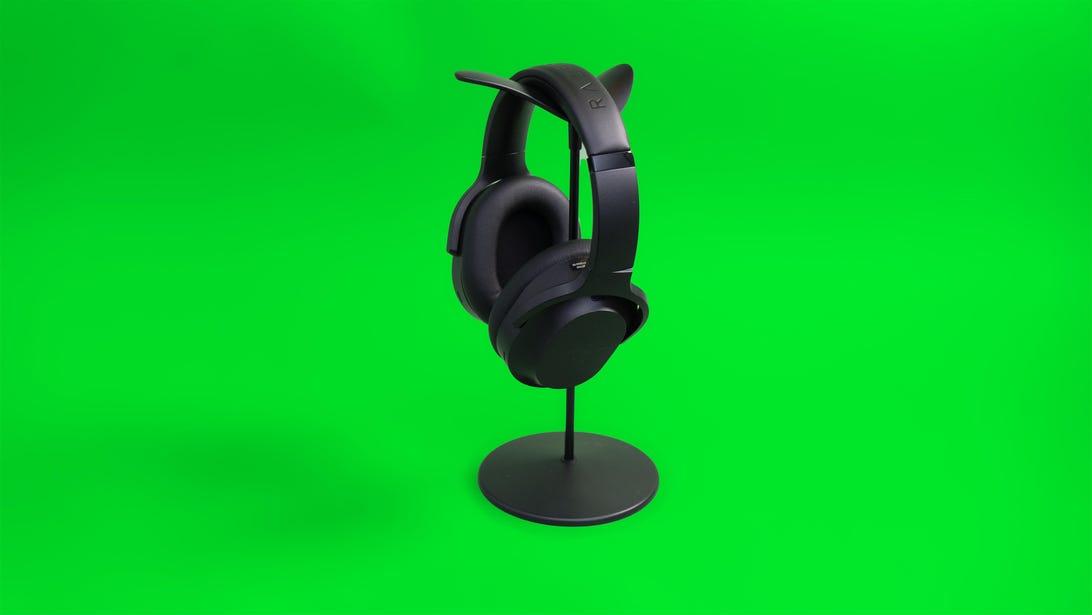
So many mixed feelings about the Barracuda Pro, Razer's wireless gaming-slash-lifestyle dual-wireless headset. It's designed for both PC and mobile gaming, with a 2.4GHz dongle and Bluetooth 5.2 support and a clean, boom-mic-free design. It includes new TriForce Bio-cellulose 50mm drivers with an integrated THX Achromatic Audio Amplifier, which deliver excellent sound. It's not particularly lightweight at 340 grams, but it is comfortable. I don't know that it's quite worth the price tag, though, unless it's on sale.
The headset runs $250 (£250, AU$440). Its lower-end sibling, the plain old Barracuda, costs $160 (£160, AU$280). It has Razer's standard Triforce Titanium 50mm drivers, supports THX Spatial Audio but lacks the built-in amp and has different material on the earcups. It's a little lighter and has a 40-hour battery life. It also includes 3.5mm jacks for analog input, making it a lot more practical. Razer has also refreshed the Barracuda X, boosting battery life to a rated 50 hours and adding Bluetooth, but keeping the same $100 (£100, AU$170) price. It's the lightest of the three at 250 grams. All are available today.
Like
- Comfortable
- Great sound quality overall
- Good battery life
Don't Like
- No analog connection or simultaneous 2.4GHz and Bluetooth operation
- Too many burdens placed on power and SmartSwitch buttons
- Quick attention mode and mic monitoring are meh
- Ear-cushion covering isn't breathable
The best thing the Pro has going for it is the sound quality. I'm still not a big fan of THX Spatial, which doesn't do as good a job as the new SteelSeries Arctis Nova Pro Wireless' Sonar software for positioning, at least to my ears. The headset has some of the most natural sound, though, and it doesn't sacrifice music. (But I can't help but think "bio-cellulose drivers" sound like something a Cyberman would use to connect your earbuds to your brain.)
Many surround gaming headsets do better with music when in a spatial mode rather than stereo, but the Razer sounds great without it -- no need for surround to boost the soundstage. It also seems to be able to hit fairly loud volumes without distortion, and delivers clarity in the three frequency ranges -- low, mids and highs -- that "TriForce" refers to. Keep in mind that like many headsets, spatial audio only works in Windows because it's software driven.
The USB-C dongle has been redesigned with the connector moved to the side rather than the middle. This helps accommodate laptops, where ports are usually close to each other and would be blocked by a wide dongle. It uses Razer's HyperSpeed Wireless technology for a low-latency connection and adds a Game mode to Bluetooth, which reduces the connection range in order to boost the connection speed. That makes sense for mobile gaming.
They're also comfortable. The new, softer leatherette on the ear cushions is similar to that of the Arctis. It feels nice and works well for sound isolation, but can get warm. But while its active noise cancellation mode muffles pretty well, Quick Attention mode -- Razer's version of allowing some ambient noise to penetrate -- actually works worse than turning noise cancellation off in some situations. It seemed to boost the frequencies of low, rumbling sound, such as the room's air conditioner or a clicky keyboard, bumping them up into louder, more noticeable ranges.

Aside from a mute button and a volume dial, the Barracuda Pro's power button and SmartSwitch button's work overtime as controls for all the features.
Lori Grunin/CNETThe mic is OK for making calls, but you definitely wouldn't want to use this headset (or at least its mic) for streaming or anything else where sound quality matters. It's clear, but it sounds too processed and a little choppy -- it's not dropping sounds, but it'll momentarily dip the volume. And the mic monitoring, at least in my testing, had a slight lag that made it unusable, both with the dongle and Bluetooth, on multiple devices.
Razer could likely fix the mic and ANC issues with a firmware update. Unless it turns out I'm the only person who's experienced them. Which has been known to happen.
Aside from a mute button and a volume dial, the Barracuda Pro's power button and SmartSwitch buttons work overtime as controls for all the features. For instance, depending on context, you'll single-press the power button to pick up a call, put a call on hold, swap to a call on hold, play or pause a track, or cancel an outgoing call. You double-press to reject an incoming call, swap calls or skip a track. And you triple-press to jump back a track.
That's a lot for the power button, especially since any one of those can accidentally turn the headset off. Meant to double-press when you only single-pressed? You're now talking to someone you were trying to blow off.

Without a boom mic, the Barracuda Pro does look a lot cleaner and suited to mobile use.
Lori Grunin/CNETThere's no dedicated Bluetooth power and pairing button. That means you either have to turn off the headset to pair with a new device (because it requires holding the power switch down for 5 seconds) or turn off the Bluetooth on the last device you were connected to (if it's in pairing vicinity) to stop the headset automatically keep connecting to it and move it into pairing mode.
You can't use the Bluetooth and 2.4GHz connections simultaneously either, like you can with some other headsets. An incoming call will ring through, for example, but you won't be able to talk on your phone and hear notifications on your PC. That might not matter to you, though, depending upon how you plan to use the headset.
As with the Barracuda X, when you hang it around your neck the Pro's earcups rotate to face with the cushion side outward, at least when the left earcup is on the left side. That exposes the headset's more vulnerable insides, which is potentially unsound if you're tromping around pollution-heavy environments.
I like the Barracuda Pro, but don't love it for the money. While aural quality and comfort matter to me -- a lot -- so do other factors, particularly a headset's design and features. And I expect more for $250.









 Add Category
Add Category